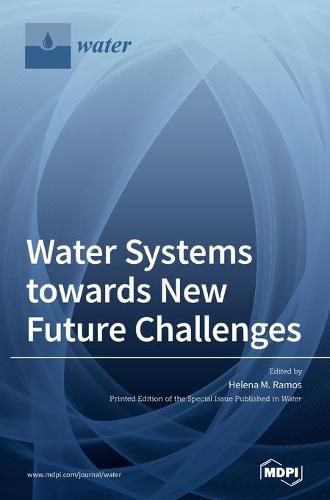Readings Newsletter
Become a Readings Member to make your shopping experience even easier.
Sign in or sign up for free!
You’re not far away from qualifying for FREE standard shipping within Australia
You’ve qualified for FREE standard shipping within Australia
The cart is loading…






This title is printed to order. This book may have been self-published. If so, we cannot guarantee the quality of the content. In the main most books will have gone through the editing process however some may not. We therefore suggest that you be aware of this before ordering this book. If in doubt check either the author or publisher’s details as we are unable to accept any returns unless they are faulty. Please contact us if you have any questions.
This book comprises components associated with smart water which aims at the exploitation and building of more sustainable and technological water networks towards the water-energy nexus and system efficiency. The implementation of modeling frameworks for measuring the performance based on a set of relevant indicators and data applications and model interfaces provides better support for decisions towards greater sustainability and more flexible and safer solutions. The hydraulic, management, and structural models represent the most effective and viable way to predict the behavior of the water networks under a wide range of conditions of demand and system failures. The knowledge of reliable parameters is crucial to develop approach models and, therefore, positive decisions in real time to be implemented in smart water systems. On the other hand, the models of operation in real-time optimization allow us to extend decisions to smart water systems in order to improve the efficiency of the water network and ensure more reliable and flexible operations, maximizing cost, environmental, and social savings associated with losses or failures. The data obtained in real time instantly update the network model towards digital water models, showing the characteristic parameters of pumps, valves, pressures, and flows, as well as hours of operation towards the lowest operating costs, in order to meet the requirement objectives for an efficient system.
$9.00 standard shipping within Australia
FREE standard shipping within Australia for orders over $100.00
Express & International shipping calculated at checkout
This title is printed to order. This book may have been self-published. If so, we cannot guarantee the quality of the content. In the main most books will have gone through the editing process however some may not. We therefore suggest that you be aware of this before ordering this book. If in doubt check either the author or publisher’s details as we are unable to accept any returns unless they are faulty. Please contact us if you have any questions.
This book comprises components associated with smart water which aims at the exploitation and building of more sustainable and technological water networks towards the water-energy nexus and system efficiency. The implementation of modeling frameworks for measuring the performance based on a set of relevant indicators and data applications and model interfaces provides better support for decisions towards greater sustainability and more flexible and safer solutions. The hydraulic, management, and structural models represent the most effective and viable way to predict the behavior of the water networks under a wide range of conditions of demand and system failures. The knowledge of reliable parameters is crucial to develop approach models and, therefore, positive decisions in real time to be implemented in smart water systems. On the other hand, the models of operation in real-time optimization allow us to extend decisions to smart water systems in order to improve the efficiency of the water network and ensure more reliable and flexible operations, maximizing cost, environmental, and social savings associated with losses or failures. The data obtained in real time instantly update the network model towards digital water models, showing the characteristic parameters of pumps, valves, pressures, and flows, as well as hours of operation towards the lowest operating costs, in order to meet the requirement objectives for an efficient system.